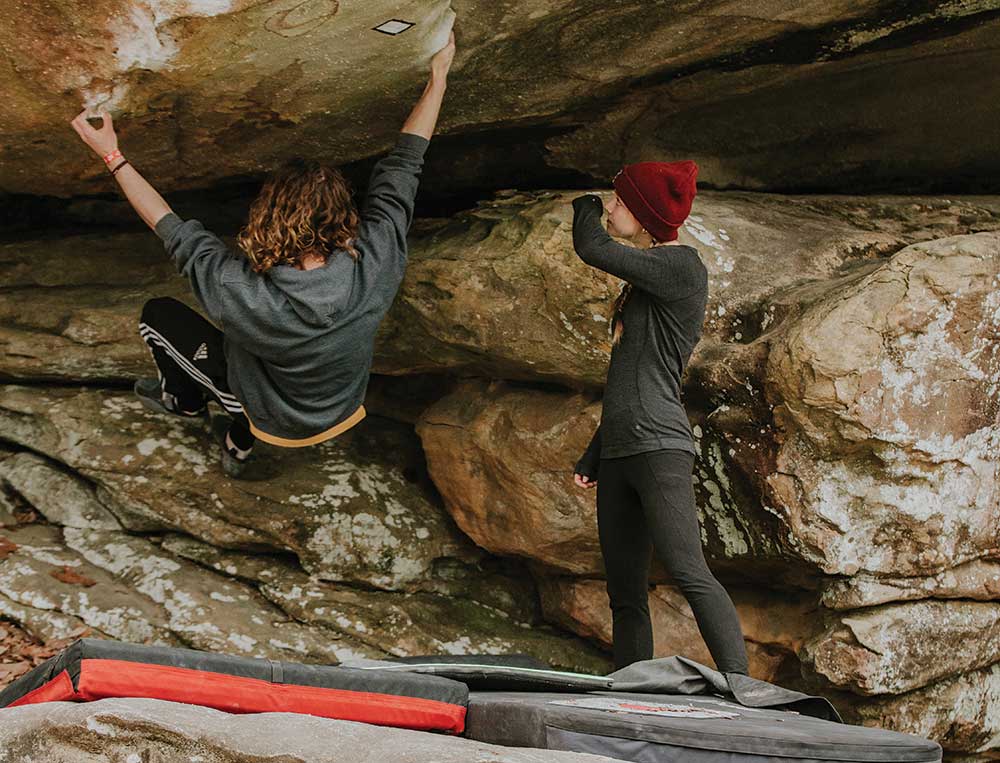American Idol’s Gressett returns to Pell City, prepares for next act
Story by Loyd McIntosh
Photos by Richard Rybka
Backstage at the Pell City Center for Education and Performing Arts building on the campus of Pell City High School, Tristen Gressett is just 20 minutes away from taking the stage. In his first appearance since his meteoric rise and frankly, stunning elimination from American Idol, the 17-year-old is launching his solo career.
And he’s doing it from the very stage he has performed on dozens of times in high school theatre productions, choral presentations and events where he was part of an ensemble. On this night, not only is Gressett the featured performer, he’s the only performer – no band, no side musicians, no background singers. Just him, an acoustic guitar (augmented with a few electric effects) and a collection of classic rock songs and some original tunes. All eyes and ears will be focused on him this evening, a reality that is only just beginning to sink in.
“It really kind of hit me today when I was getting set up that I finally have my own show where I’m getting to perform for all these people,” says Gressett. Under the management of his mother, Gressett has been performing in restaurants and bars for much of his teenage years. He comes across like a grizzled vet of honky-tonks and smoke-filled juke joints, building a dedicated group of 10-12 fans who have followed him from gig to gig. “But the rest,” Gressett says, “they’re there to drink, they’re there to eat. They couldn’t care less about the entertainment. Know what I mean?”
In the dressing room, Gressett is wired – an absolute bundle of kinetic energy. Practically unable to sit down for more than five seconds, Gressett spends the last 15 minutes before the show laughing with his girlfriend Leah Love, joking with friends and well-wishers, and even cutting up and snapping a selfie or two with yours truly.
On display is Gressett’s ants-in-the-pants exuberance that practically exploded onto the screen and had the American Idol judges – Katy Perry, Luke Bryan and Lionel Richie – a little unnerved. “We might have to sit on top of you, man,” Richie famously said following Gressett’s rendition of Billy Joel’s Piano Man.
One could easily interpret Gressett’s animation as nervousness, and who could blame them? He has a lot riding on this homecoming. Gressett, however, says “no way!” He’s more than ready to take this next step, launching his post-American Idol career from his hometown. “All my life, I’ve always wanted to be able to perform with everybody there watching for me,” he says. “So yeah, I feel like I’m one step closer to making that dream come true.”
It may be a cliché to say someone is “born” for something. Gressett’s mother and biggest fan, Missie Gressett, says, in her son’s case, it’s pretty much the truth. “He kind of came out performing,” she says. “He has always loved being on the stage. Always.” She played music constantly for Tristen in utero, playing Johannes Brahms and Ludwig van Beethoven through listening devices placed on her stomach, which, at least in part, may account for Tristen’s abilities but also his wide range of musical interests. “He still listens to classical music all these years later, and he plays it on the piano,” his mother says.
“When we were out in Hollywood, we actually went to the Hollywood Bowl and saw Two Cellos, so that was an amazing experience,” adds Ms. Gressett, who has become quite famous in her own right having been featured often during her son’s run on American Idol.
A single mother with a vibrant, creative mind of her own – the homemade Halloween costumes she used to send Tristen to school at Eden Elementary, for instance, are legendary. She has poured much of her energy and passion into helping her only child achieve his dreams. “I am the proudest mama in the world,” she says as she works the merchandise table selling T-shirts and CDs. “We just have a special bond because it’s always just been us, and I’ve always been mama and daddy.”
The American Idol Experience
Gressett auditioned for American Idol along with more than 120,000 hopefuls, all vying for a coveted golden ticket to Los Angeles. Auditioning in Nashville, Gressett’s time in front of the judges is well documented – his aforementioned hyperactivity, the tearing up while chatting with fellow Alabamian Lionel Richie, his rendition of Piano Man and his thoughtful promotions of Pell City, just to name a few of the highlights.
Gressett seemed to devour the screen during his audition, but, he says, so much more goes into those moments than what viewers see months later. “What you’re seeing on television is what an editor sat down and was like, ‘OK, how can we turn this three-hour moment into two minutes?’ My audition on television, was about, what, 15 minutes? It actually happened over a span of three days.”
Despite some initial hesitancy among the judges, Gressett earned his golden ticket and was whisked off to La La Land – Hollywood. There, he experienced the intensity of the show’s weekly production schedule of “a ton of interviews,” walking around Los Angeles shooting b-roll footage, practicing and generally trying to survive the insanity week to week.
Despite the show’s competition format, Gressett says he never viewed the other contestants as rivals. “These were all people with the same goals, and it was awesome being around all those people who have such a strong connection because they’re all fighting for the same thing,” Gressett says. “It just never felt like a competition to me.”
For much of Gressett’s American Idol run, he appeared to be the lead dog, leaving the pack behind. But Gressett was eliminated after the Top 11 show in late April after performing a rousing rendition of the Rolling Stones’ classic, You Can’t Always Get What You Want.
His ouster was not without controversy. Many viewers on streaming services such as Hulu and Xfinity claim technical issues caused Gressett’s performance to go missing from the broadcast. In the days that followed, several online petitions were begun to get Gressett back on the show due to the error. In the end, the results stood, and Gressett’s run came to an early end – fairly or unfairly.
American Idol tends to reward screechy divas and clean-cut young men rather than long-haired, bearded, bluesy rockers like Gressett – Alabamian Bo Bice being a notable exception – a viewpoint shared by none other than Katy Perry. “He’s a rock ‘n’ roller, and it’s really challenging for that genre sometimes to get really far because it’s not about who’s the best singer – you have to check a little bit of a lot of boxes,” said Perry in a press statement following Gressett’s final episode. “But I think that he definitely poured a lot of sauce on his performance tonight and you got to strike a balance. I wish him the best. I’m gonna be seeing him on stage. I’m gonna go to his concerts for sure.”
“Somebody like me is going to have to fight a little harder,” adds Gressett, “and I fought as hard as I could. But I’m happy to make it as far as I did because over 122,000 people auditioned to be on the show. Just to be able to say ‘hey I placed 11th’ makes me feel a lot better about my journey ending when it did. I’m just happy to be able to pursue music on my own now with a stronger head on my shoulders and with the knowledge that I learned from the show.”
It’s Show Time!
With the crowd at near capacity, Gressett hits the stage shortly after 7 p.m. and immediately launches into his version of Piano Man followed by an eclectic mix of well-known classics, Neil Young’s Heart of Gold, Chuck Berry’s Johnny B. Good – showing off his considerable guitar soloing skills in the process – and a version of the Beatles’ With A Little Help From My Friends.
The fifth song of the set was an original, titled The Road. Throughout the night, Gressett included a handful of accomplished original songs included on a six-song EP released in 2021 titled Act I: The Poet.
Gressett’s songwriting isn’t nearly celebrated as much as his skills as a singer and performer, although it’s clear that he puts much time and effort into his writing. “Sometimes it starts with the guitar and sometimes it starts with a phrase, and then I think, ‘How do I turn this into a song?’ I also use a lot of my personal experiences that I go through and stories of people that I know and love,” he explains.
A standout tune is one simply titled, Tiffany. It tells the story of a young and awkwardly inexperienced young man who finds himself attracted to a girl named Tiffany, who, though only a few years older, has a few more cynical miles under her belt than her would-be suitor. After finishing the song, Gressett said that it was one of his more humorous, jokey songs.
On the contrary,Tiffany displays a maturity in its wordsmithing.
In all, Gressett performed for around two hours, the crowd seemingly in the palm of his hand the entire night, even during a few moments that didn’t go as planned. For instance, Gressett managed his way around a pesky guitar cable that shorted out a handful of times during the night and handled a few of the rowdier fans with the humor and finesse of a seasoned pro.
One moment that particularly showed Gressett’s grace under fire occurred when he realized he left his capo (guitar geeks will know what this is) in the dressing room, leaving him unable to play his next song in the right key. Gressett walked backstage while mumbling in a high-pitch, faux-female voice, “You mean to tell me I paid $20 just so I can watch this kid look for his stuff?” to wild laughter before returning on stage to start the next song.
The show was a triumphant homecoming for Gressett, who waves his Pell City flag high and proud. While much of his talent and stage presence is natural, he says there have many people along the way who have helped him to become the person he is today.
“In eighth grade, my drama teacher, Mrs. Nixon, really encouraged me to hone in on my performance in theater. I’ve always been kind of crazy, but she got me to hone in and use it as a way of expressing myself,” says Gressett. “Mrs. Kaler at the high school has been one of my biggest supporters. She’s such a great person in general, but she has done so much when it came to getting people to vote for me. She’s been such a huge part of this for me.
“And, of course, Eden Elementary. That’s my home place over there. I love Eden. I went and sang for the kids over there recently and, man, that was such a full-circle moment for me,” Gressett add. “That was so awesome.”
What’s Up Next?
With his American Idol experience and high school graduation behind him, Gressett is focused on kick-starting his music career in a big way. Eventually, he plans to relocate to Los Angeles, but, until then, his schedule is full of appearances throughout the summer.
He performed at the Creek Bank Festival in Leeds, the Block Party in Pell City, and he opened for American Idol winner and Birmingham native Taylor Hicks at the Jazz Fest in Alexander City.
Later in June, he opened for Jefferson Starship at the Helen Keller Festival in Tuscumbia, and on July 1, Gressett performed in Canada, his first time traveling outside the U.S., at the Grand Falls Potato Festival in Grand Falls, New Brunswick. l






























